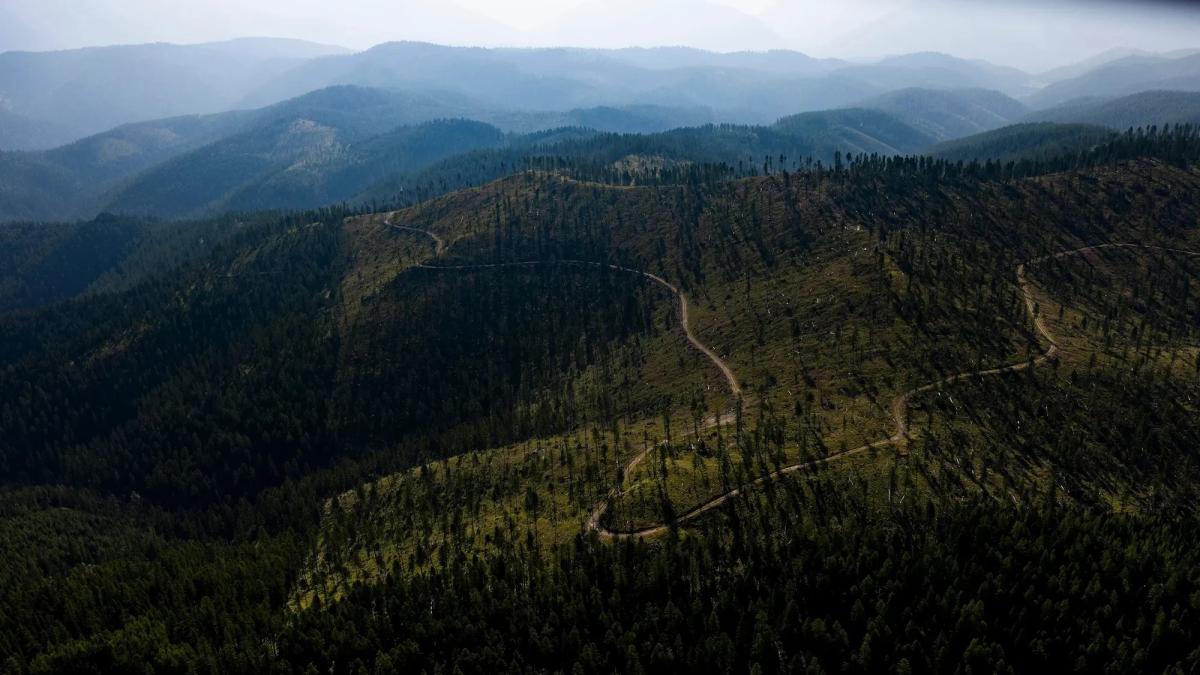How schools, hospitals, and prisons in 15 states profit from land and resources on 79 tribal nations
On a wet spring day in June, fog shrouded the Mission Mountains on the Flathead Indian Reservation in northwest Montana. Silver beads of rain clung to blades of grass and purple lupine. On a ridge overlooking St. Mary’s Lake in the southeastern corner of the reservation, the land was mostly cleared of trees after state-managed logging operations. Some trees remained, mainly firs and pines, spindly things that once grew in close quarters but now looked exposed without their neighbors.
Viewed from the sky, the logged parcel was strikingly square despite the mountainous terrain. It stood in contrast to the adjacent, tribally managed forest, where timber operations followed the topographic contours of watersheds and ridgelines or imitated fire scars from lightning strikes. “It’s not that they’re mismanaging everything, but their management philosophy and scheme do not align with ours,” said Tony Incashola Jr., the director of tribal resources for the Confederated Salish and Kootenai Tribes, or CSKT, as he looked out the window of his Jeep at the landscape. “Their tactics sometimes don’t align wit... Read more
